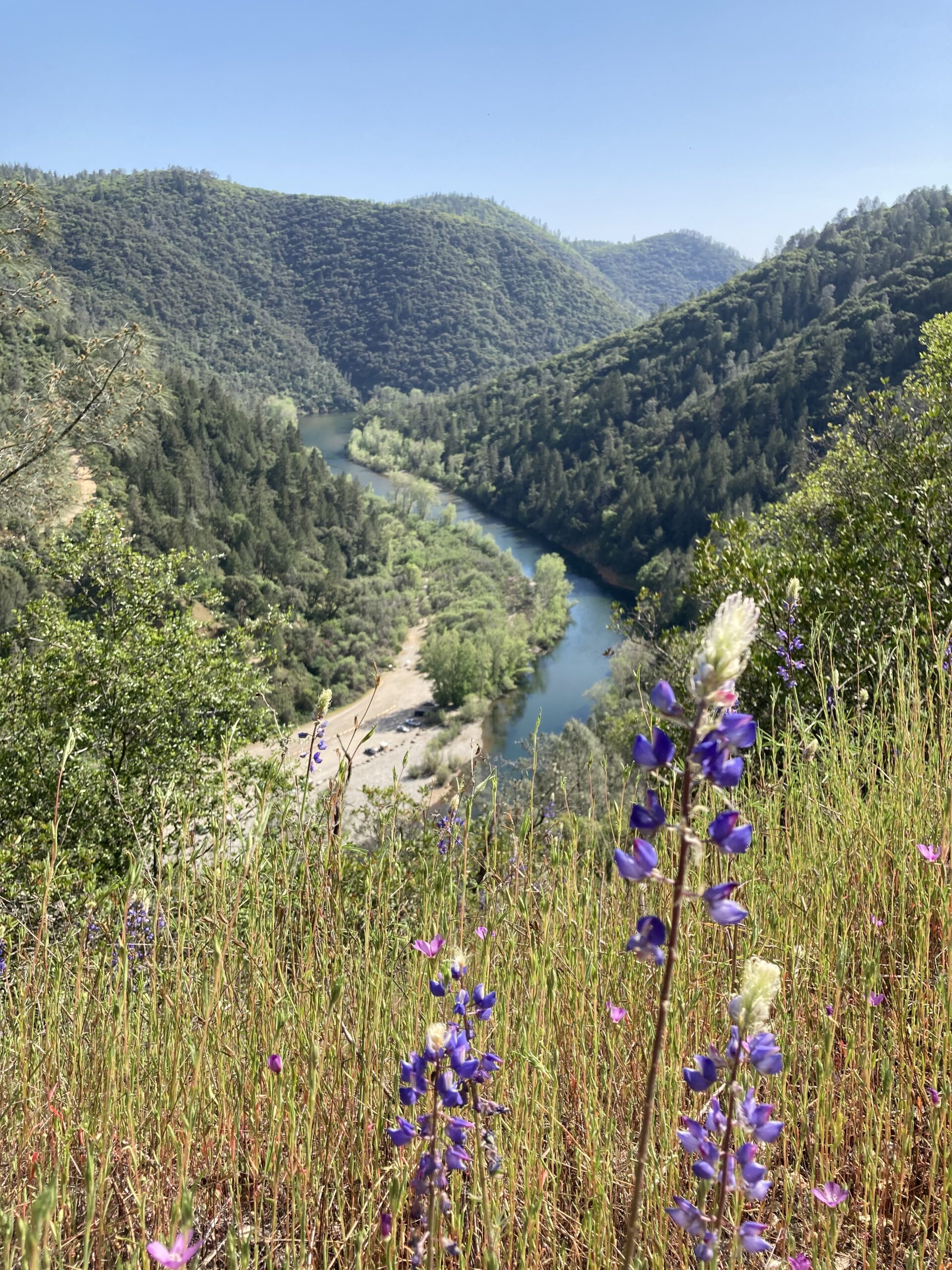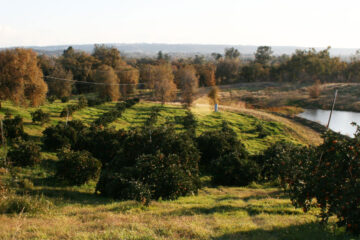Quick Facts:
- 40 acres of wilderness along the Bear River
- Protected by acquisition since 2005
- Largest contiguous area of oak woodlands remaining in Placer County
- Habitat for Dogface Butterfly, California’s State Insect
Remote Wilderness Protection
Placer Land Trust’s Bear River Protection Program envisions protection of the Bear River watershed from Lake Combie to Camp Far West Reservoir. This area contains some of the last roadless areas in western Placer County, as well as significant oak woodlands, rangelands, and wilderness areas.
Biodiversity
The area between Raccoon Creek and the Bear River represents the largest contiguous area of oak woodlands remaining in Placer County. Approximately 331 species of wildlife inhabit Placer County’s oak woodlands including mountain lions, bobcats, several species of hawk, rodents, snakes, owls, and songbirds. The regional blacktail deer herd uses the Preserve area for winter migration.
River Habitat
The Bear River flows along two sides of the property, moving from a gradual slope into a steep rocky gorge. Healthy riparian zones provide critical habitat for a wide range of terrestrial and aquatic species while also contributing to water quality by filtering excessive nutrients and other pollutants before the water reaches the stream. The Bear River and the adjacent riparian area supports fish, otters, frogs, turtles, snakes, birds and butterflies.
Wildlife Corridors
Large areas of intact wilderness provide critical habitat for larger animal species. The oak woodlands between Bear River and Raccoon Creek form an important north-south corridor complimenting the east-west corridors formed by the rivers and the adjoining riparian habitat.
Cultural Heritage
In addition to its natural values, the Preserve also contains archaeological sites dating to the Gold Rush and earlier. Nisenan and other Native Americans lived on this land for over 5,000 years. Shutamul was a historic Nisenan village located on the Bear River downstream from the property. Aside from an unimproved dirt access road, the property is relatively untouched by man – a prime example of the dwindling wilderness left in Placer County.
Dogface Butterfly Habitat
The California dogface butterfly is the California state insect, but is quite rare due to its limited habitat. Little was known about its lifecycle prior to the butterfly being discovered at Shutamul Bear River Preserve, where it is being studied by representatives from UC Davis’ Bohart Museum of Entomology and Placer Land Trust volunteer Deren Ross. The sole food source of the California dogface butterfly caterpillar is the False Indigo plant, Amorpha californica, which thrives on our Shutamul and Laursen Bear River Preserves along the Bear River. These Preserves are home to the largest number of breeding California dogface known in the Sierra Nevada. Learn more here about the Dogface Butterfly and research efforts at Shutamul Bear River Preserve, or check out the video below for a glimpse of this elusive insect!
Volunteer and naturalist Deren Ross has documented the history of the California dogface butterfly research conducted at Shutamul Bear River Preserve; click here to read (PDF).
Shutamul Bear River Preserve is currently not open to the public. For a list of our properties that have public trails, visit our Trails page.











